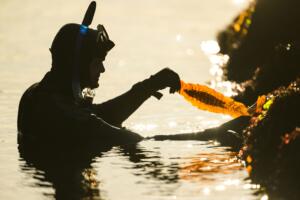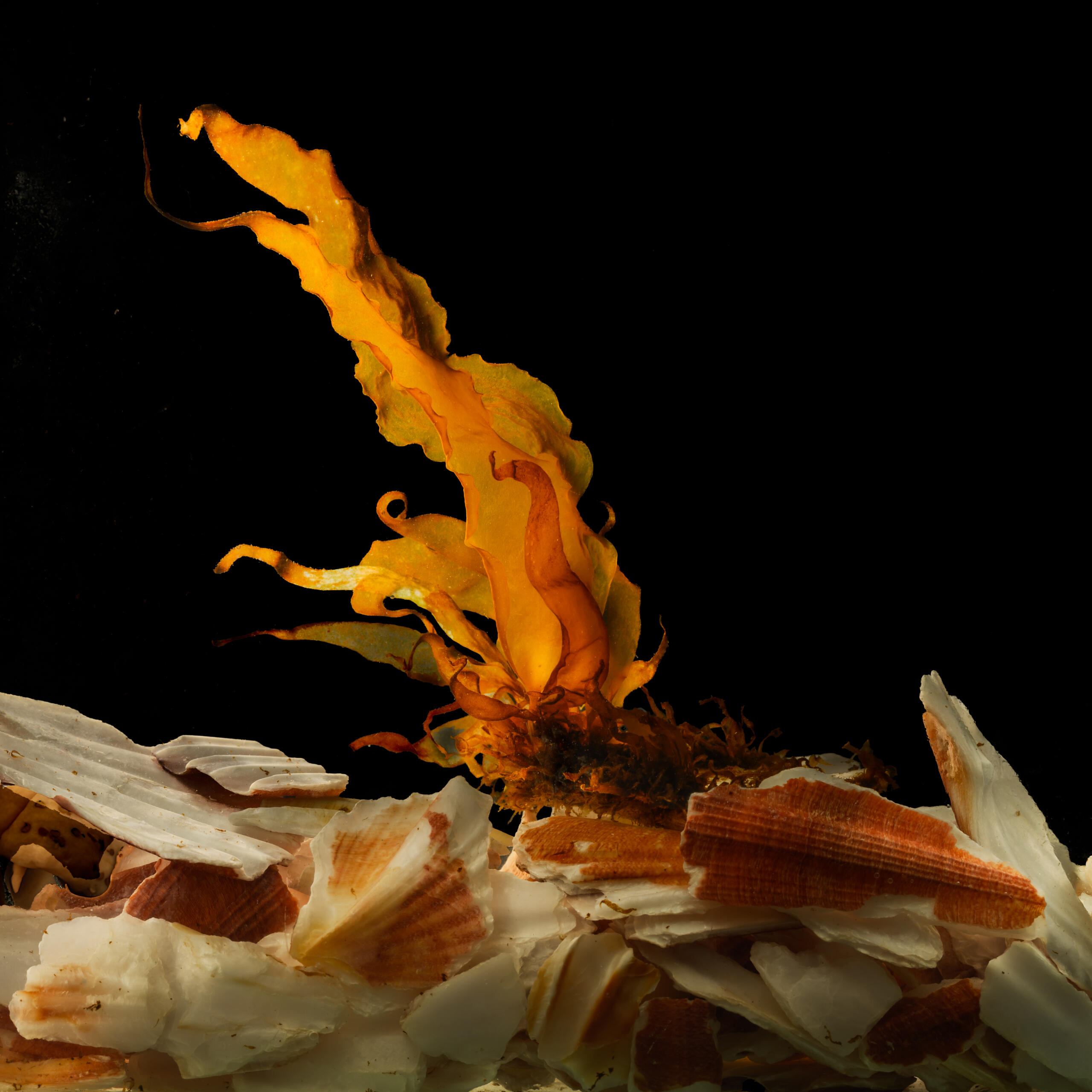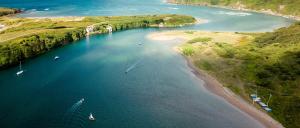
Grants
Marine Conservation
Native Kelp Restoration
£15,000 awarded
Project Dates: 15.04.24 to 15.07.25
Why restore kelp forests?
Found along almost a third of the world’s coastlines, kelp forests play a vital role in marine ecosystems by providing habitat and food for a diverse range of marine species.
The UK and Ireland represent an important area for kelps, with 7 different species, covering an area up to 20,000 km2 along the UK’s coastline. Kelp habitats support essential ecosystem services, including fisheries habitats, biogenic coastal protection, nutrient cycling, and carbon uptake and storage.
However, kelp beds are declining across the world, with losses stemming from a variety of physical and biological factors such as climate change, decreases in water quality, coastal development, overgrazing, overharvesting, and pollution.
Local declines of kelp forests have been reported in certain areas in the UK. Early warning signs of climate change and human activities include species range shifts, with cold-adapted kelp species declining in southern England.
Losses or shifts in the structure of kelp forests in the UK could have significant consequences for marine ecosystems and the services they provide to coastal communities. The UK lags behind international marine restoration, having only recently made limited progress towards restoring seagrass meadows, saltmarshes, oyster reefs and kelp beds.
Pioneering kelp restoration trials in England
Scientists at Plymouth’s Marine Biological Association (MBA) and Newcastle University have begun trials to progress an active kelp restoration technique for four species of native kelp (Order Laminariales), using test sites in Devon and Durham. The technique works by seeding kelp spores onto small rocks and scallop shells – a seafood waste product – in efforts to regenerate the UK’s coastal kelp forests.
The fundamental goal of the project is to develop a system for restoring degraded kelp forests using a low-cost, scalable, and practical solution, whilst bridging the gap between marine conservation and the fishing and seafood industry.
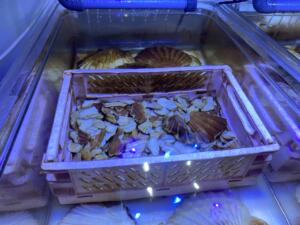
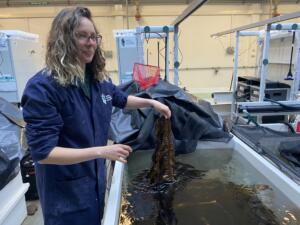
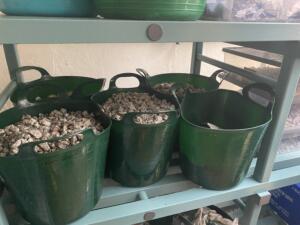
From tanks to seabed trials
The restoration method adopted for this project is known as ‘green gravel’ and was first pioneered in Norway in 2020. To start the trials, a dedicated controlled temperature room was set up with tanks, pipework, racking, filtered seawater, UV sterilization, and specialist lighting.
This project, which is the first of its kind in the UK, uses these controlled laboratory conditions to grow native kelp species using fertile ‘sorus’ material (seed) obtained from local donor plants. To do this, sections of frond filled with spores are cut out and bought back to the lab, then disinfected with a quick dip in iodine solution. The fertile kelp material is dried and rehydrated to initiate the release of hundreds of millions of microscopic kelp spores.
The shells and gravel needs to be cleaned and put into tanks of seawater, prior to the spores being added. Once the spores are added, the kelp seedlings grow rapidly and are visible as a brown fuzz within three to four weeks. To optimise seeding methods, tests are comparing the success of seeding with both spores and microscopic gametophyte life stages.
Scientists at the MBA have also recently started to assess kelp settlement density, growth rate and attachment strength on both sides of scallop shells, using flat, concave and crushed shells. Evey year, more than 30,000 tonnes of shells go to landfill in the UK, at a cost to the industry. There’s huge potential to use shells as a restoration material at scale, either whole or crushed into smaller pieces.
Once juvenile kelp plants have grown large enough (~1cm long), normally after a period of three months or more, the substrates and kelp will be out-planted at sea by simply dropping the shells and gravel over the side of a boat where they sink, allowing the kelp to attach to the seabed where it grows to maturity. This method means there is no need for expensive, labour-intensive dive teams to install kelp onto the seabed.
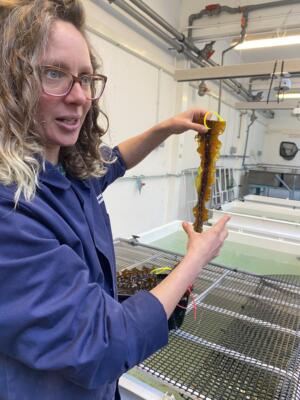
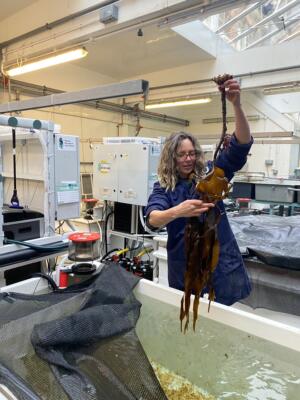
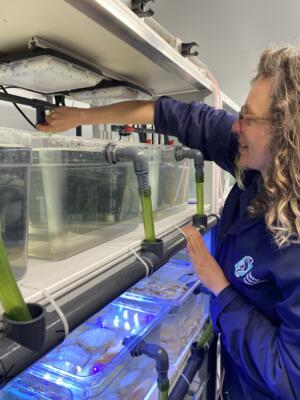
The team at the MBA and Newcastle University, in partnership with the local fishing fleet, will monitor the kelp habitats every few months for several years. Early laboratory trials results have produced promising results, however the ultimate success will likely vary due to local conditions at each site.
The project has been working closely with the fishing communities from the North East Fishing Collective, Whitby Fishing Association and Plymouth Fishing and Seafood Association. The ambition is that the fishing fleet will support the out-planting activities on an ongoing, paid basis.
Their progress over the next three years will inform kelp restoration methods through the Green Gravel Action Group which recently identified international challenges and solutions to marine forest restoration. The scientists and industry partners involved in this project are working together to find out how to best to adapt green gravel methods to specific locations and wave conditions in the UK.
If scalable and effective in different scenarios, this technique could provide a sustainable use for waste shells, reducing the volume sent to landfill each year nationally, while restoring crucial ocean habitats.
The project has been collaboratively funded by the Marine Management Organisation, Fishmongers’ Company’s Fisheries Charitable Trust, Newcastle University, Seafarers Charity, Marshall Wace, Devon Environment Foundation, and the Dixon Foundation.
Devon Environment Foundation’s funding was generously provided by Graphite Capital and dryrobe®.
Discover more on the MBA website here.
Image credits: Main image copyright 2024 Marine Biological Association.
Smaller images courtesy of The Kelp Conservation Initiative CIC.
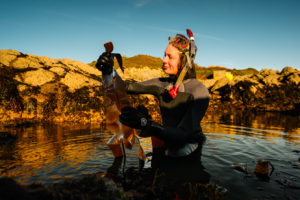
Project Overview:
- DEF’s grant unlocked a further £25,000 from the Fisheries and Seafood Scheme to build a new kelp hatchery at the MBA in Plymouth.
- This enabled MBA scientists to start the groundbreaking trials to develop kelp restoration techniques for native kelp species in Devon.
- The project’s focus is to develop techniques for the UK context, trialling different aquarium conditions (light, water flow, water treatment, seeding method, and substrate) to optimise protocols.
- They are also testing the restoration methods at three sites by deploying the ‘green gravel’ by hand to allow for accurate re-location and monitoring by MBA scientific dive teams.
- Researchers will monitor the out-planted kelp to assess retention and attachment to the seabed, growth, and biodiversity value of the ‘restored’ kelp by comparison to naturally settled kelp habitats.
- Out-planting sites will cover a wave exposure gradient, to assess the environmental breaking point of the method for the dynamic coastal waters surrounding Devon.
Project Challenges:
- The ambition to outplant native kelp seedlings at several Devon coastal locations has not been realised due to MMO restrictions preventing restoration practices to take place in protected areas.
- More advocacy work is required to overcome this outdated bureaucracy. In the meantime, the project is focussing on hand planting (no licence necessary) in Plymouth Sound where the scientists can easily monitor progress.
- The use of waste scallop shells worked well in the laboratory, although they have not yet been able to deploy at sea due to the shells being classed as ‘hazardous waste’ – highlighting the need for another policy update.
Project Impact:
- The new kelp hatchery at Plymouth’s MBA has successfully grown native kelp species from spores on different types of UK gravel and scallop shells.
- The research has demonstrated huge potential to use scallop shells as a restoration material at scale, either whole or crushed into smaller pieces.
- Juvenile seedlings grown in the hatchery are being out planted during early 2025 to test the applicability of this restoration approach in the UK context for boosting the resilience of wild kelp populations.
- The project has been published in The Conservation and Reflections to portray it to the wider public.
- Area restored in Devon: 9 m² (3 m² patches x 3 areas along a wave exposure gradient. N.B. this is a smaller area than originally planned due to challenges involved in gaining a marine licence, and the need to focus on lab research and hand planting instead to continue to make progress.)
- Carbon captured: 9 m² is estimated to sequester 9 kg of CO₂ per year (see Laminaria estimations of 1.09 tonnes per hectare in Nature article: https://www.nature.com/articles/s41467-023-37385-0#citeas)
- The learnings provided by this pioneering project have the potential to leverage exponential impact if these kelp restoration techniques are replicated along the UK coastline over the coming decade.
What’s Next?
- The team will continue to deliver and monitor the green gravel restoration technique in Devon for the next three years.
- New trials are about to commence to test the growth and survival of native kelp species on 3D printed artificial reefs units made from waste seafood shells by Danish start-up company, ReefCircular.
- These reefs could be secured to the sea floor or seawall structures to boost biodiversity and provide a suite of ecosystem services, either for restoration purposes or to improve the habitat value of man-made marine structures.
- They will continue to advocate for policy changes to remove outdated red tape from marine restoration practices.
Image credits: © 2025 Marine Biological Association
IMPACT SUMMARY August 2025
Project Activities:
- With the support from DEF, the project managed to secure two PhD students (both of whom are based at the Marine Biological Association in Plymouth) who will be monitoring the progress of the out planted seaweed for a further two years.
- The project has encouraged governments, public institutions and media to act in ways that support the natural world.
- Extensive engagement with government was conducted to get our marine license over the line, and the first license has been achieved.
- Approval of public funds to support kelp restoration projects, with a further 400K secured to deliver this work in two locations in England.
Project Impact:
- With the preservation, protection and regeneration of a specific habitat – kelp beds – a specific native species helped to thrive.
- A reduction in plastic waste, through working with ReefCircular, to test the use of artificial reef tiles made from shell waste as a practical method to seed and out planting kelp spores.
- The project has increased the extent to which local politicians/officials discuss environmental issues and has increased levels of coverage of environmental issues in local media.
